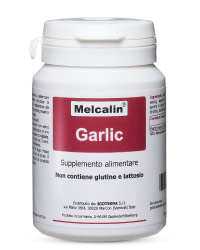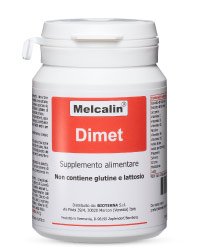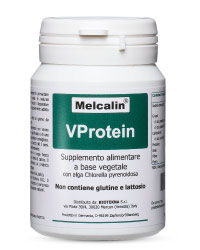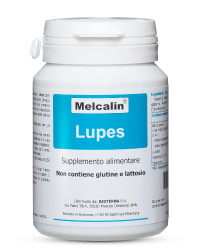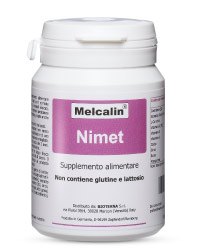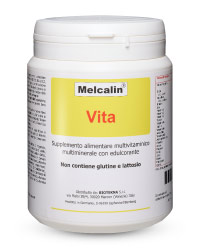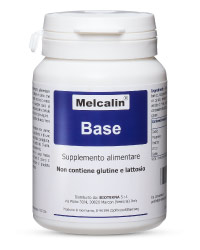Introduction
Pain, leg heaviness, bloating, cramps and varicose veins are all symptoms and signs of chronic venous insufficiency1, a problem that affects about 50% of adult men and women.
Most of the products that can relieve these symptoms are of plant origin including 2 compounds such as derivatives of red vine, diosmin and hesperidin which are object of several recent studies. The results demonstrate that these compounds have vasoprotective properties encountered with a decrease in capillary permeability, an increase in resistance and an improvement of the lymphatic system, and that also perform a protective action on the cardiovascular system through a lipid-lowering effect and free radical scavenger with antioxidant action.
Melcalin Flow s a food supplement made from red vine, diosmin, hesperidin and vitamin C; the high titration in proanthocyanidins (95%) of the seeds of red vines and the association with hesperidin, diosmin and vitamin C ensures a good quantity of active substances which are able to perform a protective action on the cardiovascular system thanks to their high affinity with the vein wall and an important action on the microcirculation particularly useful in circulatory diseases and disorders such as Raynaud’s phenomenon.
Cardiovascular Action
The protective action on the cardiovascular system may take place by various mechanisms which consist of an antioxidant action, an inhibitory effect on the lipid oxidation and a positive activity on the vascular tone.
a) antioxidant action
Free radicals and oxidative stress play a crucial role in the pathophysiology of many cardiovascular disorders including heart failure, cardiomyopathy, atherosclerosis and coronary heart disease. It is very imporant to limit the presence of such compounds in the body in order to avoid being predisposed to the onset of these disorders; it becomes necessary, therefore, the intake of antioxidant compounds namely of nutrients capable of blocking these reactive and harmful molecules3.
It has been shown that the extract of grape seeds, also composed of proanthocyanidins, provides a higher antioxidant efficacy compared to vitamins C, E and beta-carotene; such supplementation is able to improve cardiac function, reduce the tachycardia, ventricular fibrillation and the severity of myocardial infarction by means of a reduction in the amount of reactive oxygen species (ROS)4,5.
Diosmin and hesperidin also possess good antioxidant properties6,7,8 thanks to their ability to increase the concentrations of two important enzymes in the redox processes (superoxide dismutase and glutathione peroxidase)9.
Vitamin C is one of the most known antioxidant agents3,it is able to significantly decrease the negative effect of reactive oxygen species and nitrogen that can cause oxidative damage to macromolecules such as lipids, DNA and proteins causing cardiovascular diseases , stroke, cancer and neurodegenerative diseases, therefore, several studies are focusing on the possibility of using this vitamin in treating diseases that are believed to be associated with damage caused by free radicals10,11,12,13.
b) Action on lipid oxidation
Recentemente le Proanthocyanidins have recently attracted attention as compounds with cardio-protective effects: in a clinical study in subjects with hypercholesterolemia supplementation with proanthocyanidins has significantly reduced the proportion of oxidized LDL, a parameter that is a biomarker of cardiovascular disease5,14,15; in addition, the ‘French paradox’, according to which the French population have one of the lowest incidences of coronary heart disease despite a diet rich in fat, was explained by the high consumption of red wine which is rich in proanthocyanidins16.
Several epidemiological studies indicate diosmin and hesperidin as substances also equipped with cardio-protective effects: their regular intake was associated with a reduced risk of cardiovascular disease and the protective effects are due to the improvement of the coronary vasodilation, an anticoagulant effect and the prevention of the oxidation of low density lipoprotein (LDL)17. In particular, a study on hesperidin underlined its ability to modulate lipid peroxidation 18, in addition studies on the administration of diosmin and hesperidin led to a significant increase in cholesterol HDL9.
Vitamin C plays its protective action on the vascular structures inhibiting the oxidation of lipids in HDL: in the absence of vitamin C, the oxidation of lipids in HDL starts immediately and proceeds quickly.11,19;
c) vascular tone
Recent studies have assessed the effect on vascular tone of red wine polyphenols including proanthocyanidins; they increase the expression of the monoxide synthase and inhibit platelet aggregation20.
Alsohesperidin stimulates the production of NO (nitrogen monoxide) endothelial; a study shows that daily intake of hesperidin leads, already after3 weeks, to an improvement of endothelial function, to a reduction in biomarkers of inflammation in the circulation and to an improvement of the lipid profile in patients with metabolic syndrome21.
Diosmin is used to treat chronic venous insufficiency, hemorrhoids, lymphedema, and varicose veins; its action involves the improvement of the venous tone, the increase of lymphatic drainage, the protection of the capillary bed, the inhibition of inflammatory reactions and the reduction in capillary permeability.
The modulation of the tone of vascular smooth muscle is clinically relevant for both the arterial and venous system; recently it was clarified that it can be modulated by varying the sensitivity of the contractile apparatus to calcium. Diosmin is able to act on the calcium-dependent contractility by increasing the sensitivity of the contractile apparatus in respect of that ion, thus determining an venotonic action22. In case of venous insufficiency, the administration of diosmin is able to bring a significant improvement of clinical signs and of quality of life23,31 in addition, in the treatment of pre and postoperative flebectomy it helps to reduce the pain, post operatorative bruises accelerating their reabsorption and increases exercise tolerance in early postoperative period24.
Vitamin C is necessary for growth and repair of tissue as it is used to
form the collagen, a protein essential for skin, tendons, ligaments and blood vessels3. A prolonged vitamin C deficiency is associated with an increase in cardiovascular risk due to a disturbance of the concentrations of glutathione and nitric oxide25: A study has shown that the administration of vitamin C to smokers restores coronary microcirculatory reactivity with anti-free radical effect26; numerous studies support the hypothesis that nitric oxide is inactivated by free radicals contributing to endothelial dysfunction present in pathologies such as hypertension and angina27,28,29,30.
The ability ofhesperidin to stimulate the production of NO (nitrogen monoxide) associated with the known properties of diosmin which is able to improve the venous tone, to increase lymphatic drainage and to protect the walls of the capillary bed, create a mix useful to the treatment of several circulatory disorders including Raynaud’s phenomenon.
Raynaud’s phenomenon is a disorder of the circulatory system that occurs after exposure to cold, to sympathetic stimulation (excitement, fear) or to chronic stress; most commonly it affects fingers and toes and occurs due to peripheral vasoconstriction. The consequence is that blood (which provides nourishment and oxygen) cannot, at times, to flow as it should in the different ends of the body, so some parts become “cyanotic” and cold32,33.
The improved blood flow in the distal parts is a useful tool to improve the symptomatology (see. Test PPG Stress Flow).
Conclusions
Chronic venous insufficiency is a problem that affects approximately 50% of adult male and female causing the appearance of disorders that can be more or less bothersome depending on the degree of progression of the disease; also the prevalence of other venous disorders such as Raynaud’s phenomenon should not be underestimated given that recent researches have revealed a prevalence of 3 to 5% of the population34.
To intervene with a combined supplementation of more active principles able to act on the vascular district represents a useful intervention to alleviate the symptomatology and to try to slow the progression of these disorders.
Melcalin Flowcontains dry extracts of seeds of red vine with a high titre in proanthocyanidins (95%), diosmin and hesperidin all compounds belonging to the family of flavonoids: those are substances which several epidemiological studies indicate as equipped with protective effects on the cardiovascular system. Their regular intake has been shown to be associated with a reduced risk of cardiovascular disease because these substances act on several fronts: reducing capillary permeability, improving the lymphatic system and coronary vasodilation and preventing the oxidation of LDL. All these benefits will enhance those resulting from vitamin C that has always been known as a vitamin with antioxidant actions as well as being important for
the formation of collagen; several studies have shown that nitric oxide is inactivated by free radicals thus contributing to endothelial dysfunction and consequently the occurrence of cardiovascular diseases, therefore, the intake of antioxidants is essential for the welfare of the cardiovascular system.
So Melcalin Flow, thanks to the protective effects of its active ingredients on the vascular structures, it’s a useful supplement fora protective effect on the cardiovascular system and is an important action on the microcirculation particularly useful in circulatory disorders and diseases such as the Raynaud’s phenomenon and venous insufficiency.




